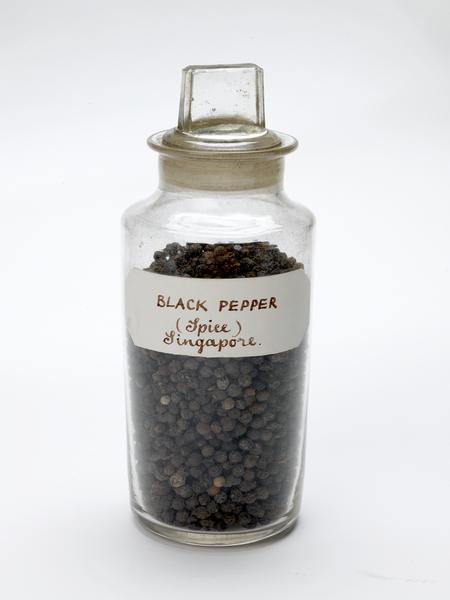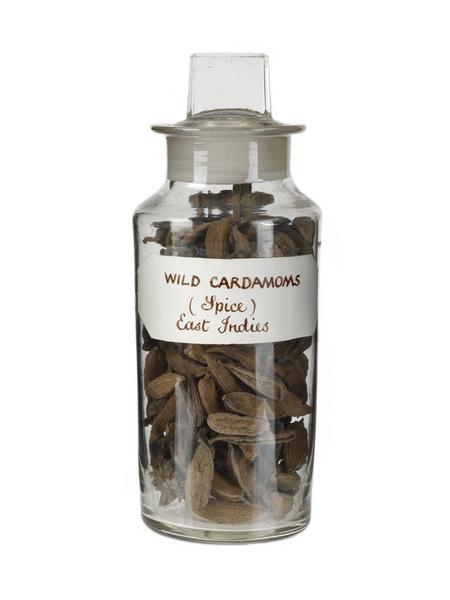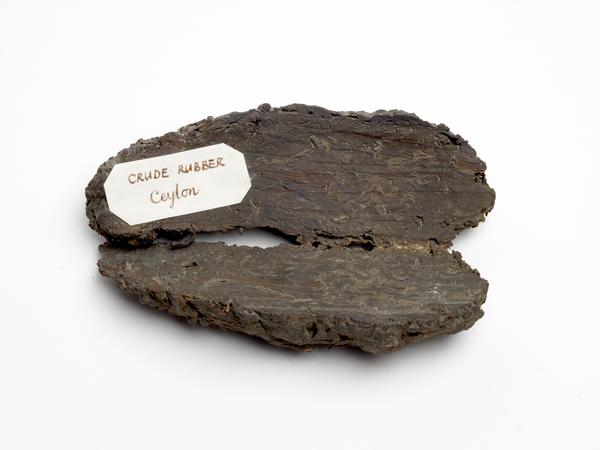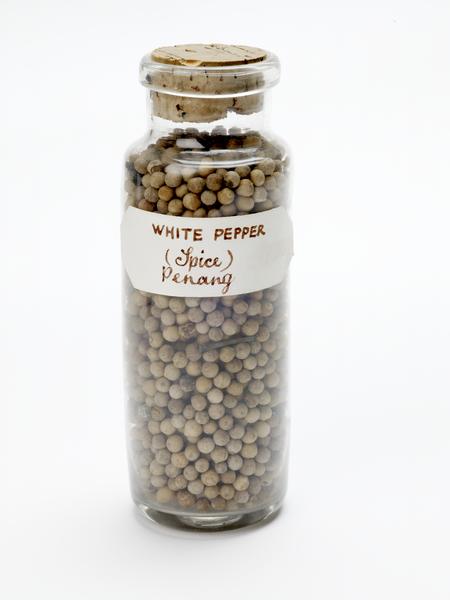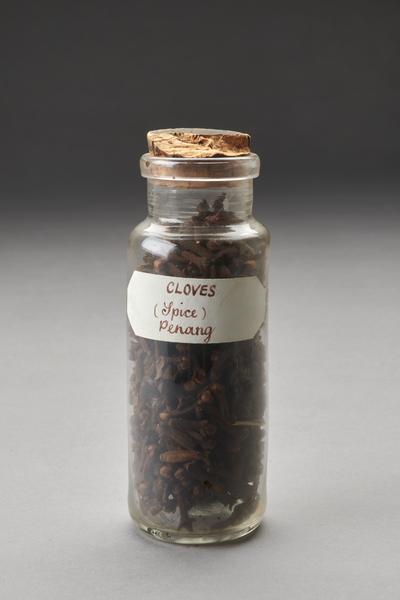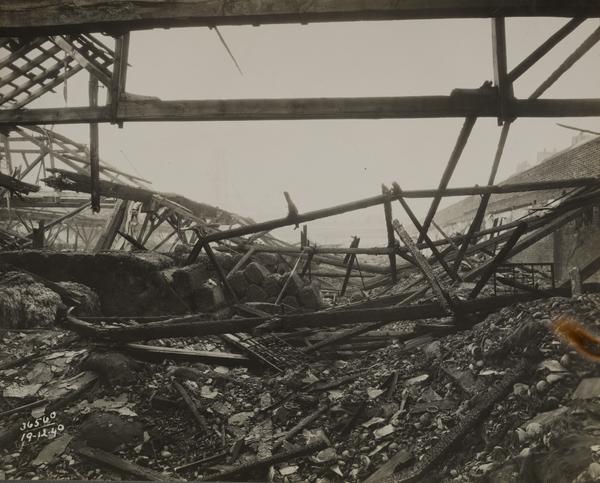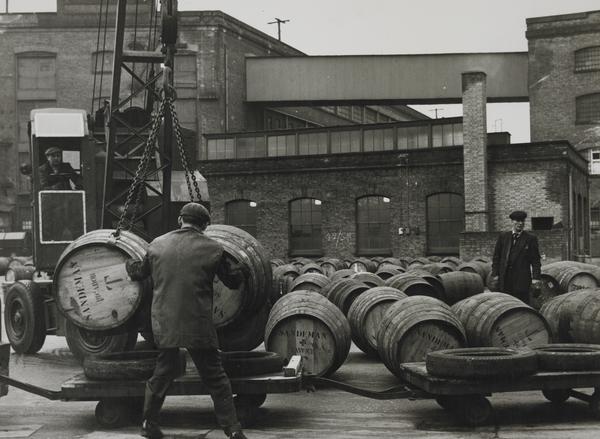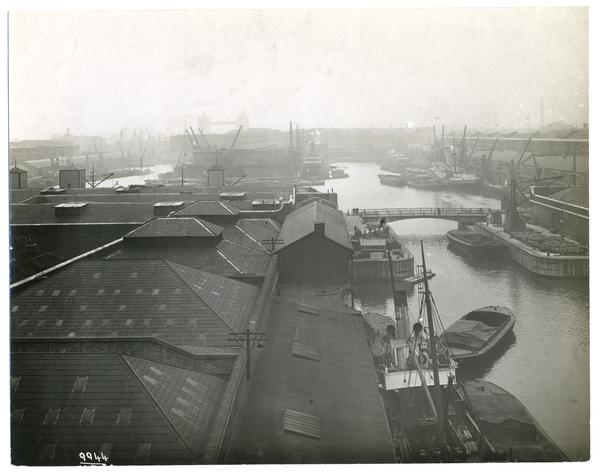London Dock
Built in Wapping in 1805, the London Dock, which includes Tobacco Dock, was once the landing point for luxury goods like wine, tobacco, spices and tea.
Wapping, Tower Hamlets
1805–1968

Barrels being checked at London Dock in 1933.
Tobacco then techno
Endless barrels of wine, bundles of tobacco and crates of tea were unloaded, stacked and sampled here.
Much of it arrived from the British empire, while the construction of the docks themselves was partly funded with profits from the British trade in enslaved Africans.
In the 1960s, the shipping industry left London. As the London Dock was redeveloped, the area welcomed News International’s printworks and a short-lived shopping centre. Tobacco Dock later became a venue for techno and drum and bass.
When was the London Dock built?
The London Dock Company was formed in 1800 with permission from Parliament to construct one of London’s first enclosed docks. John Rennie was the engineer chosen for the job.
The London Dock opened in Wapping in 1805, three years after a separate company had established the West India Docks further east on the Isle of Dogs.
The London Dock complex included a West and East Dock, connected by the much smaller Tobacco Dock. Alongside these wet docks which boats moved through, huge warehouses with vast underground vaults were built to store the goods.
“Twelve of the investors in the LDC were absentee owners of plantations”
Who funded the London Dock?
Among the 588 initial investors in the London Dock Company (LDC), many were connected to the British trade in enslaved Africans.
Some investors organised the voyages transporting enslaved people from Africa. Some owned plantations in the Caribbean which used enslaved people as labourers. Others were involved in the trade of products produced on those plantations, like tobacco, sugar and rum.
To give an example, one investor in the LDC was Richard Miles – one of London’s leading traders of enslaved Africans. Between 1785 and 1806, he launched 40 voyages from London to traffic enslaved Africans to America.
Twelve of the investors in the LDC were absentee owners of plantations – meaning they didn’t live there. One, William Vaughan, was among the many owners given compensation when the enslaved Africans who worked on his plantation were freed in the 1830s.
Which goods passed through London Dock?
For 21 years during the 19th century, the London Dock Company had a monopoly which meant all tobacco, rice, wine and brandy had to be unloaded there. The exceptions were goods from the Caribbean or islands in south-east Asia – then known as the West and East Indies. Those went to the West India or East India docks instead.
The London Dock became a destination for luxury goods including wool, tea, coffee, cocoa, ivory and spices. Many were shipped from parts of the British empire.
Ivory was also sold on the “ivory floor”. Roughly 30,000 elephant tusks were sold here in 1930, and there are even references to woolly mammoth tusks stored in the warehouses.

A variety of tusks on the "Ivory Floor" at St Katherine's Docks around 1935.
Redevelopment: what came next?
In 1864, the London Dock was merged with the St Katharine Docks. Both made it through the bombing during the Blitz of 1940–1941.
But in the 1960s, the incoming larger ships and their containers were less suited to London’s older docks. The Port of London Authority closed the London and St Katharine Docks in 1968, selling them to Tower Hamlets Council, who filled in the docks.
In 1981, the London Docklands Development Corporation bought the land. Rupert Murdoch’s News International opened their printing works there in 1986, in the face of strikes known as the Wapping Dispute.

Tobacco Dock closed in 1986 and later became a music and events space.
In 1989 Tobacco Dock was turned into a shopping centre by architect Sir Terry Farrell. It struggled to attract customers. The mall, along with its last, lonely sandwich shop Frank & Steins, closed in 2008.
Since then Tobacco Dock has briefly housed soldiers providing extra security for the 2012 Olympic Games, and became a space for events, including daytime techno and drum and bass parties, video game conventions and trade shows.






